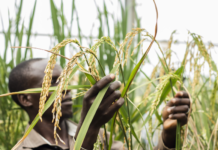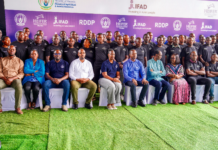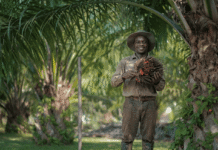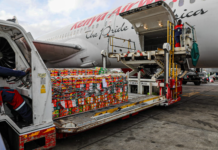As the two-day Africa Sugar Conference 2025 concludes in Nairobi today, stakeholders have underscored the vast investment opportunities across the continent’s growing sugar sector. Key areas identified include sugar and ethanol processing, technological innovation, research, and climate adaptation strategies.
Industry experts speaking at the conference highlighted that Africa currently contributes approximately 6% of global sugar production while accounting for 12% of worldwide consumption—a gap expected to widen in the near future.
“From the data and statistics available, it’s clear that Africa produces significantly less sugar than it consumes. This presents a major opportunity for increased production and processing,” said Jessica Edinger, Manager of Sugar Analytics at S&P Global.
Edinger noted that Africa ranks just behind Asia in terms of sugar consumption, resulting in a heavy reliance on imports to bridge the production shortfall.
Simbarashe Garaba, Business Improvement Director at Zambia Sugar, ABF Sugar, acknowledged the challenges facing the sector—such as high production costs driven by poor infrastructure, climate change, smuggling, outdated policies, and lengthy investment payback periods. However, he emphasized the untapped potential in areas like ethanol production, pharmaceuticals, and animal feeds.
“Multiple revenue streams and the goal of food sovereignty provide compelling reasons for investors to explore opportunities in Africa,” said Garaba. He added that each African country has unique strategies guiding its sugar industry development.
David Kafuko, Technical Manager at Uganda Farmers Crop Industries, stressed the importance of reliable off-takers for farmers, cautioning that without assured markets, farmers may hesitate to scale up production.
“It’s tough to convince farmers to increase output if they don’t know where they’ll sell their harvest,” he said. Kafuko criticized zoning policies in some countries that require farmers to sell to designated millers, calling such regulations a hindrance to growth.
He urged governments to not only review restrictive policies but also invest in research and youth training to ensure a skilled workforce replaces the aging generation of professionals in the industry.
Embracing Technology and Climate Resilience
A major theme at the conference was the need for African sugar producers to adopt modern technologies such as artificial intelligence (AI) and the Internet of Things (IoT) to enhance cane production and reduce labor costs.
“Smart drip irrigation is a practical solution farmers should consider, especially as water resources dwindle,” said Garaba, pointing to the increasing urgency of water conservation.
Richard Magero, Deputy Director, Sugar Directorate at the Kenya Sugar Board, highlighted the outdated machinery still in use at many state-owned mills—some dating back to the colonial era. He pointed to Kenya’s ongoing efforts to privatize five government-run mills as a way to attract investment in modern machinery and technical expertise, following the model of more efficient private facilities.
Climate change remains a pressing issue for sugar producers across the continent. Michael Ogg, Regional Manager at Bonsucro, noted that access to global markets is increasingly tied to compliance with environmental standards.
“To support producers, we’ve developed tools such as the climate calculator, climate cane tracker, and a climate vulnerability tool to guide sugarcane farming and marketing,” said Ogg. Based in Eswatini, Ogg has spent the past 25 years working on a major sugarcane development project in the country.
Eswatini currently leads Africa in sugar production, with over 650,000 metric tonnes (MT), followed by Egypt at 595,000 MT, and Zambia at 450,000 MT. Ethiopia also produced 450,000 MT, with Zimbabwe at 391,000 MT, Kenya at 376,000 MT, Mauritius at over 355,000 MT, and Malawi at 239,000 MT.








